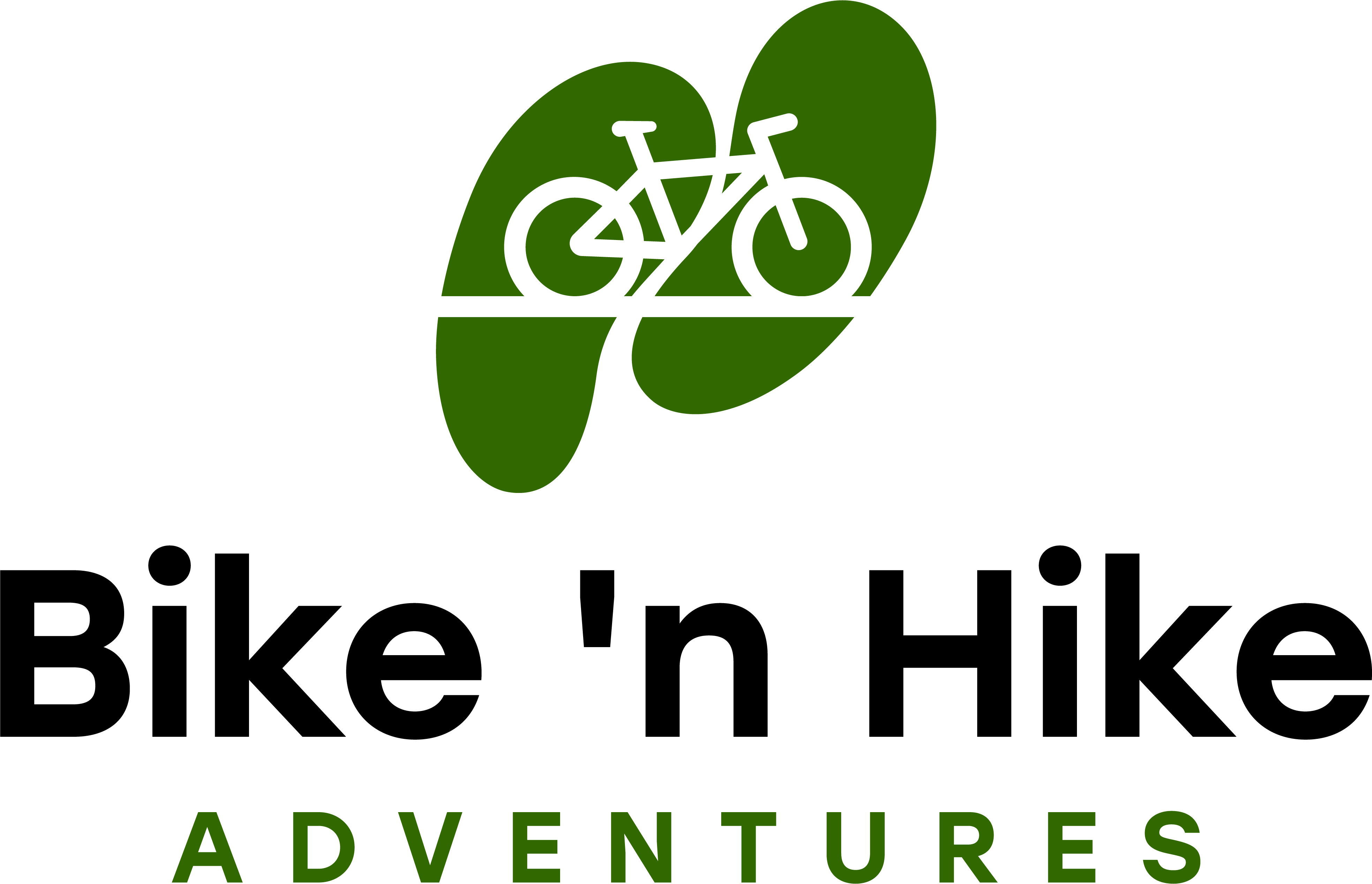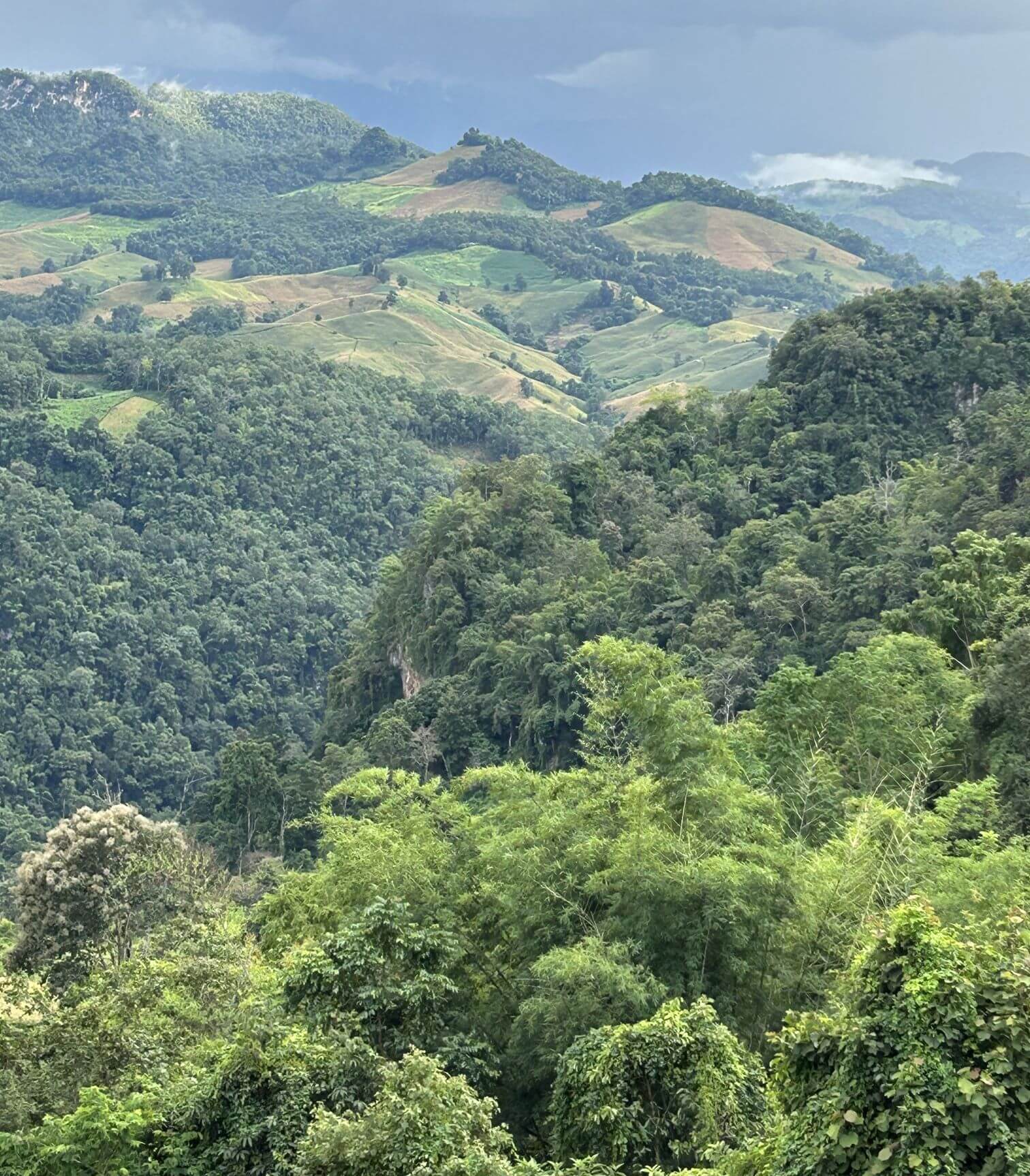
Hiking Northern Thailand
As part of my tour of Northern Thailand in 2023, I was one of only 4 people who had signed up for a three-day hiking extension to remote villages. We would be accommodated in homestays.
Community Based Tourism (CBT)
Community Based Tourism refers to a form of sustainable tourism that emphasizes the involvement of local communities in the tourism industry. Its goal is to empower local residents, preserve their cultural heritage, and promote economic development. For the host country, community tourism is a way to diversify the tourism sector, promote sustainable development, and alleviate poverty in rural areas. Community tourism often focuses on showcasing the rich cultural heritage of local communities (e.g. such as traditional crafts, rituals and festivals), which benefit the traveler who is able to participate alongside local individuals, thus having a more enriching travel experience.
Cultures and diversity are celebrated by both the locals and the visitors – each can learn from the other. Of course, the success of CBT depends on the careful balancing of the activities, so that such interactions are authentic and meaningful and do not become only an Instagram post for the traveler and an overwhelming burden for the hosts.
Although this 3-day journey was focused on trekking, our accommodations would be with local families as part of a community tourism initiative.
Day 1 – Chiang Mai to Ban Mae Chok
We started with a 3-hour drive to our trail head, stopping at the Kiew Lom Viewpoint en route.
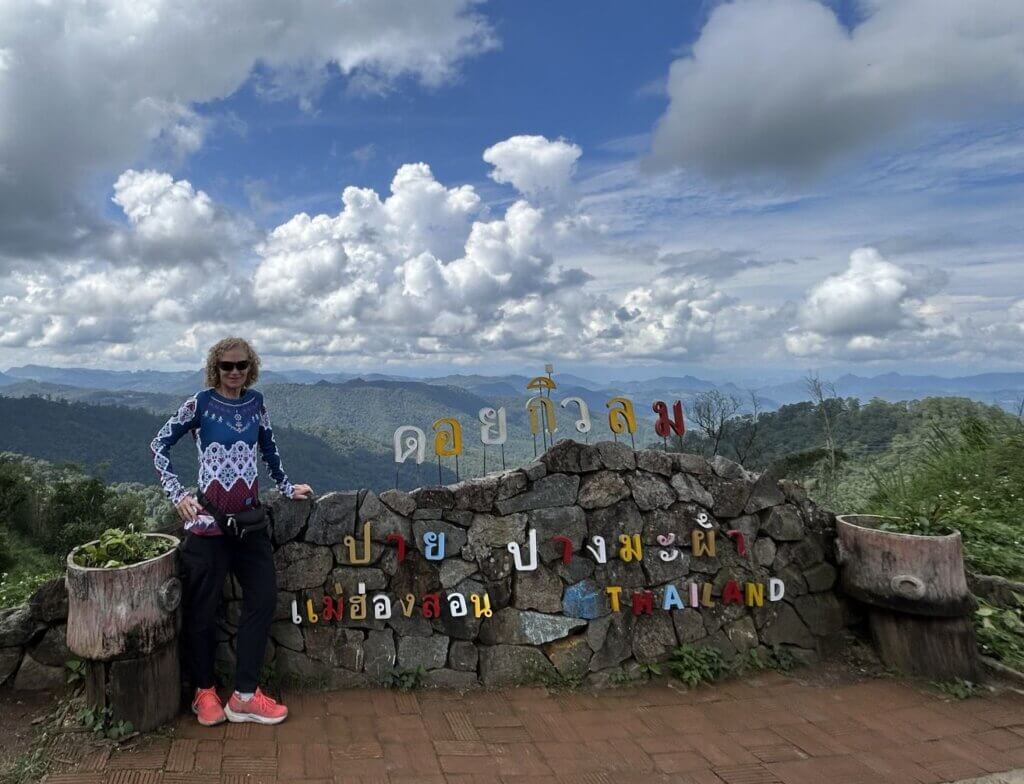
We would have to trek about 90 minutes before lunch. I started out trying to keep my feet dry – but soon gave up. It had been raining recently and we had to go through some water and mud. Oh well. The terrain was hilly – we went past lots of farms. The scenery was spectacular. Lunch was at a village farm, cooked by the woman who would be our homestay host. Rice, omelet, veggies, soup – an amazing feast that had been brought to us via motorbike.

We wandered about the farm and learned of the communal approach. This year, the farm’s crop would be garlic, and it was planting season. This was very much a manual operation.

The crops are rotated each year to both preserve the soil and to ensure all the farms in the community had equal opportunity.
We continued walking after lunch. It would be 2-3 more hours, with a lot of uphills, to Ban Mae Chok, a Karen village.
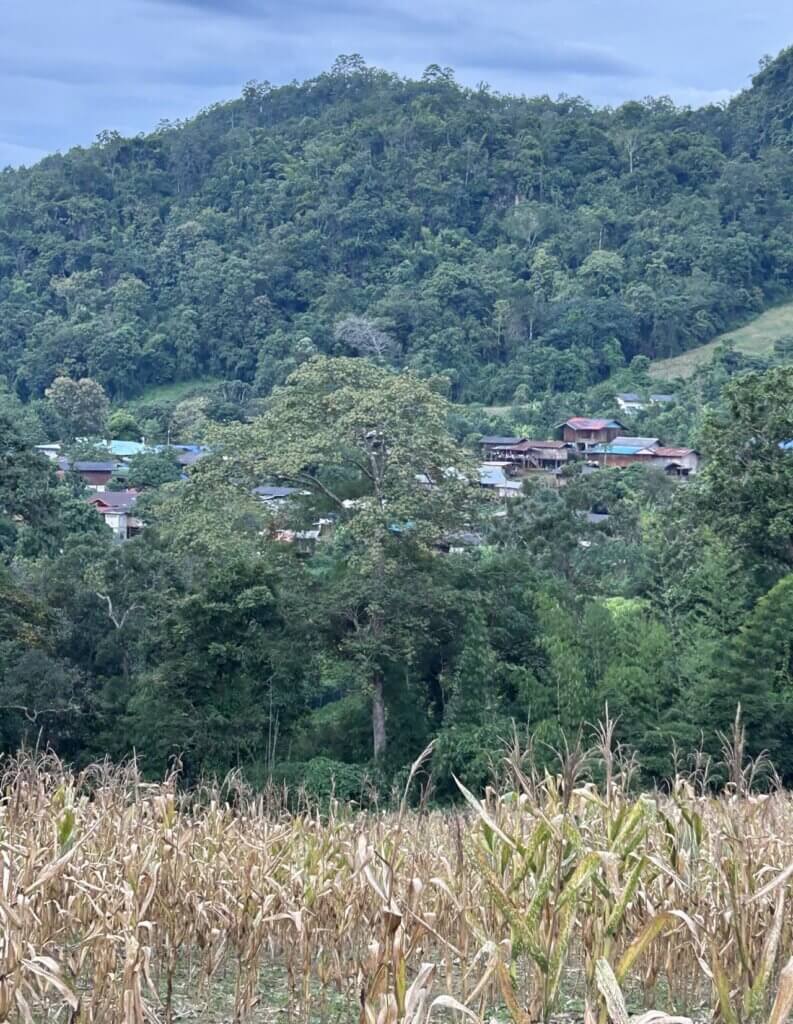
Our homestay did not have electricity, only solar power. The four of us would be on sleeping mats in one room. Interesting. I had not experienced this kind of group accommodation before. It was sort of like camping, except we had a roof and platforms. The toilet was not in the house – using it involved a slog through mud as it rained a lot that night.
Fortunately, we had a good group all of whom took everything in stride. I don’t think any of us had any preconceived notion of what this trek would be like – we were all there to learn
Day 2 – to Pa Khao Lam
Today would be our longest walking day – approximately 6 hours in total. It was a really nice hiking day – such incredible, peaceful scenery. We walked a lot in water. It was a new experience for me and a wonderful discovery – hiking in water! You stay cool all day long.
We stopped for lunch, again brought to us by our homestay host. We continued to the village where our accommodation was more modern (electricity and inside flush toilets). One of my guides told us about her personal experience with the evolution of toilets which was very amusing and actually highlighted the speed of improvements in rural Thailand. You learn so much from your local guides!
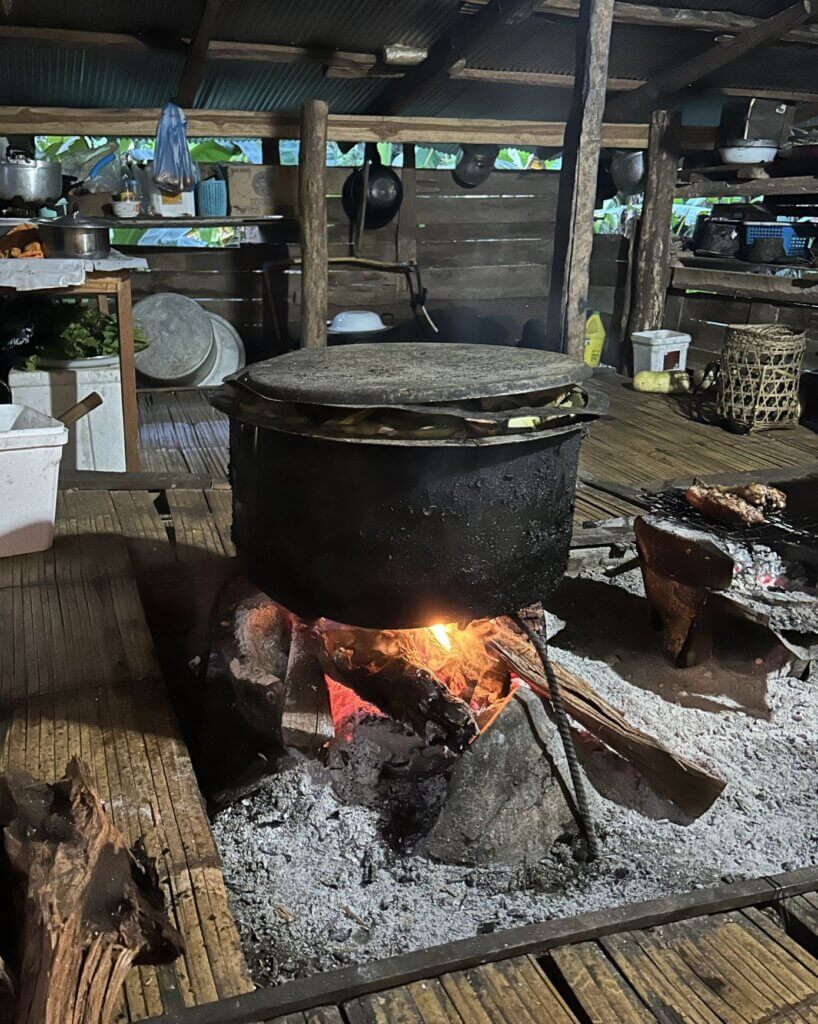
Before dinner we took a stroll through the village and stopped at the local school where we joined in some playground games with the kids. It has been a log time since I have done such fancy footwork! We were fortunate to be in Thailand for the Ok Phansa festival, which marks the end of the Buddhist Lent. In this community, every household prepared sweet offerings for the monks at a special ceremony in the morning. We helped our host family prepare some of their offerings and we joined the lineup the following morning with our own contributions that our guide had arranged.
Day 3 – to Ban Muang Kut
This would be our last hiking day, and only for about 3 hours in the morning. Today – we were walking even more in the water – I would estimate about 90% of the time. What fun! Some parts were waist high, but our guides assisted with our backpacks. Clearly, they have done this before! What a truly memorable day.
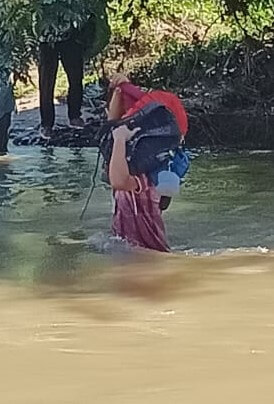
Our first destination of the day was the huge Tham Lod cave system, which was spectacular. We first took a bamboo raft into the cave, and then walked.
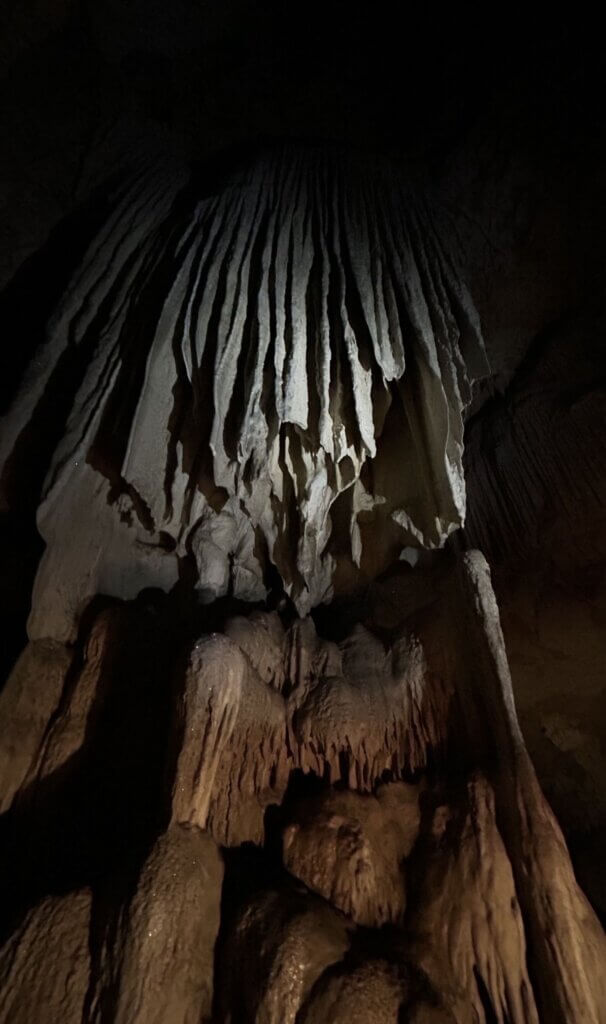
Our guide pointed out some of the more interesting shapes. It was really a fascinating place. Unfortunately we were not able to get into the “coffin cave” hidden within the main cave, and we were there in the morning so we missed the twilight return of the 300,000 bats and swifts which would have been really cool too see.
After lunch on the back of a pickup truck we headed to our final homestay in Ban Muang Kut. It was a tiny village on one of the most spectacular routes I have ever seen. I felt so blessed to be able to see such a beautiful place.
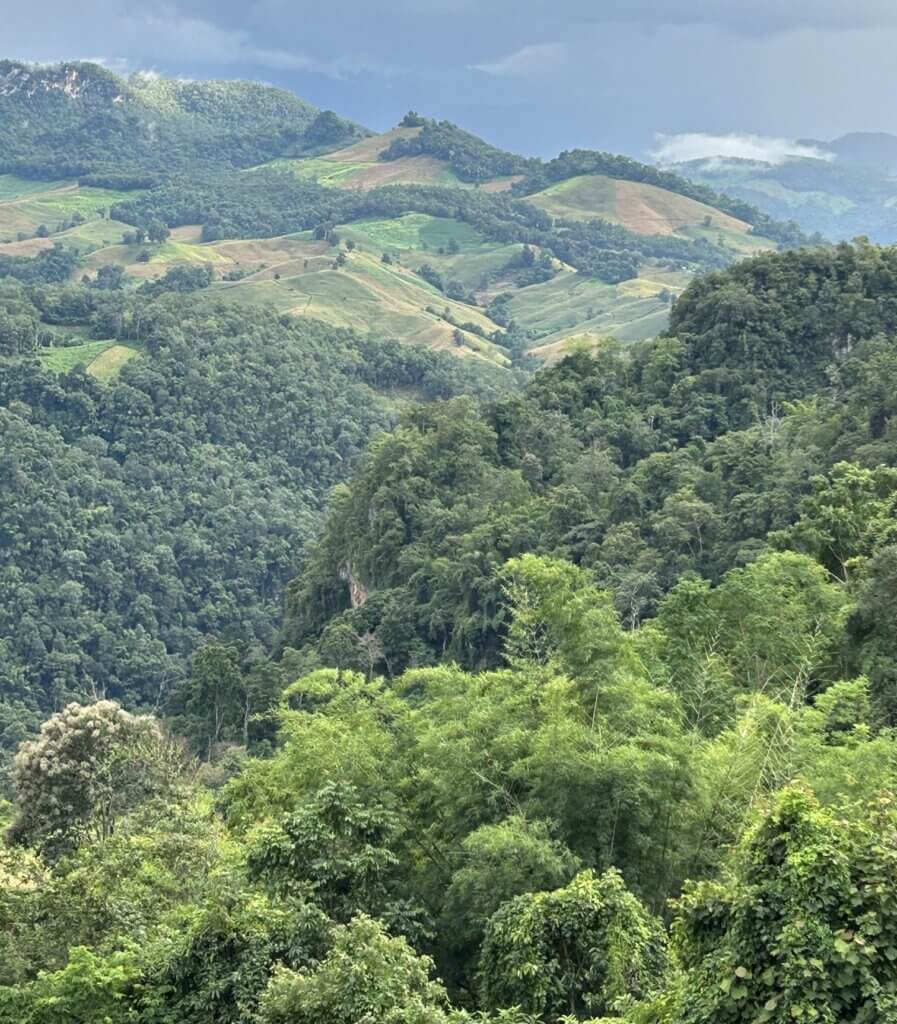
Even better, our guide had a good friend who lived there, and we were invited into his home for a visit. What an absolute treat, and the biggest advantage of having such a tiny group. His friend is well known as he started community tourism in that area. I think he had the best view in the whole village.
We had a couple of local visits – we created 7-eye protectors and visited the home of a local musician who builds, play, and fixes traditional Thai musical instruments. We were invited to try one of the wind instruments – none of us very successful. Apparently it is a dying skill in Thailand.
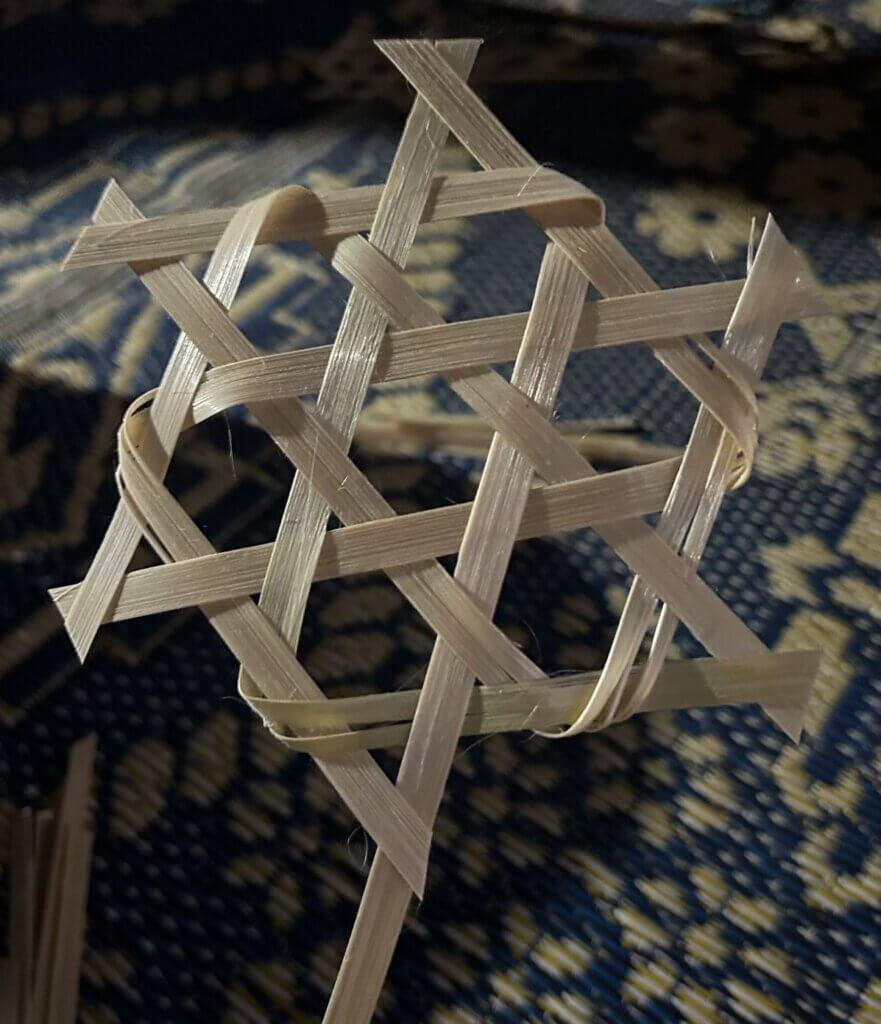
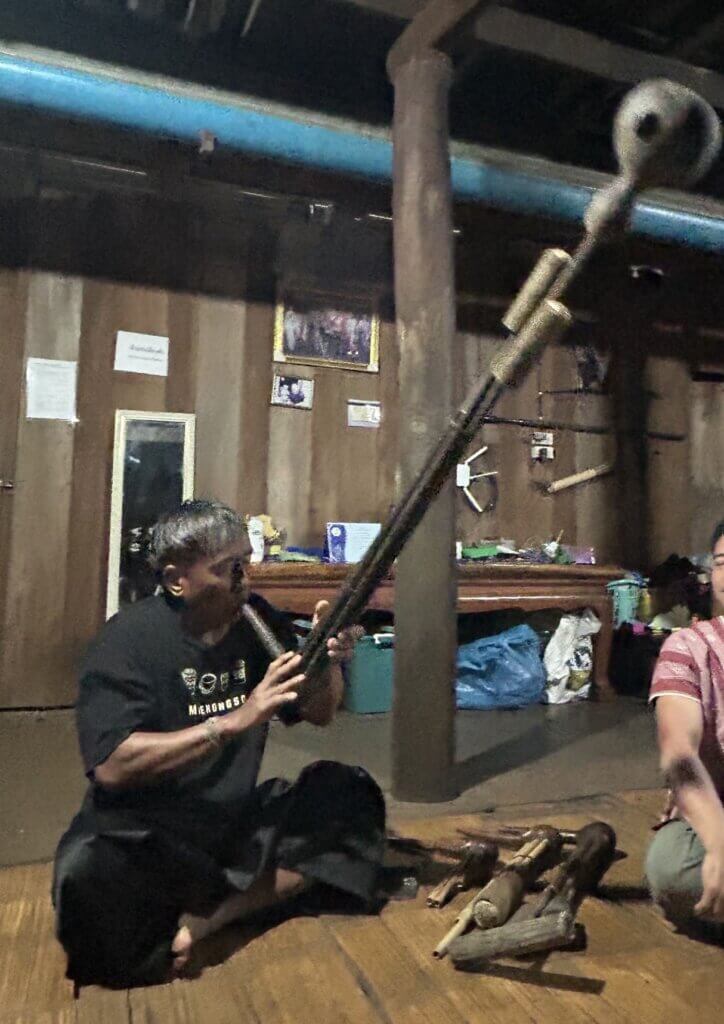
The next morning I got up early to watch the sunrise (magical!) and then we headed back to Chiang Mai.
Travelling with our small group and participating in a community-based tourism tour was enlightening. Comparing Thai lives to mine was inevitable. I felt fortunate to be able to travel, unlike many Thai people who face financial constraints or struggle to obtain necessary travel documents. This experience deepened my understanding of different cultures and enhanced my appreciation of universal truths: that family is a focal point for everyone, and that community and belonging are crucial for overall happiness. For the people in Northern Thailand, the community was where they lived. For those who like to travel, the community is people who like to do the same things you do.
Where else can my feet take me?
Please contact me if you are interested in discovering wonderful places with a new travel community!
3 highlights:
- Learning about the lifestyles and culture of the remote Thai populations.
- Discovering hiking in the water – what a marvelous way to stay cool!
- Learning about different uses for banana and palm leaves
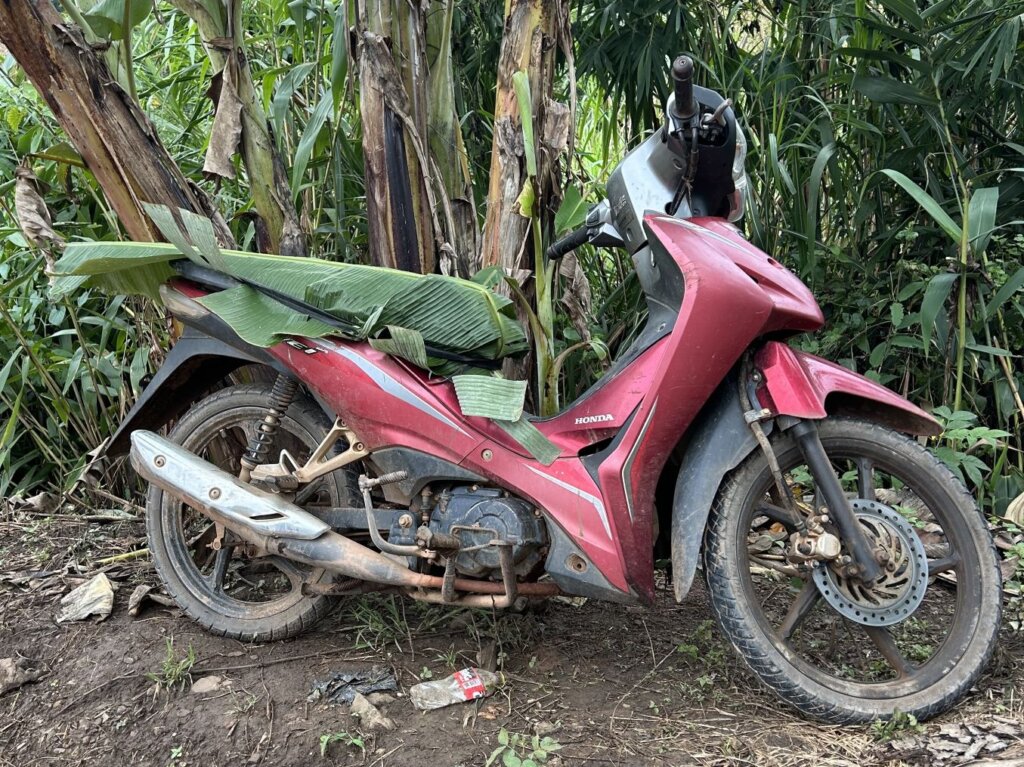
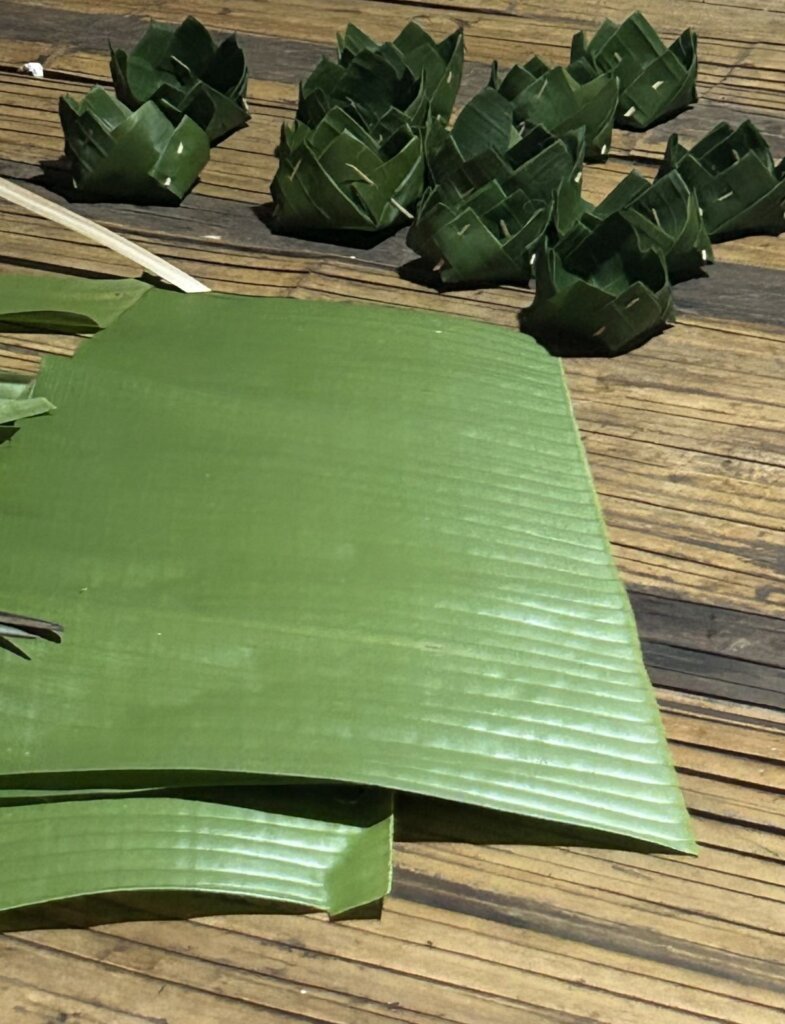
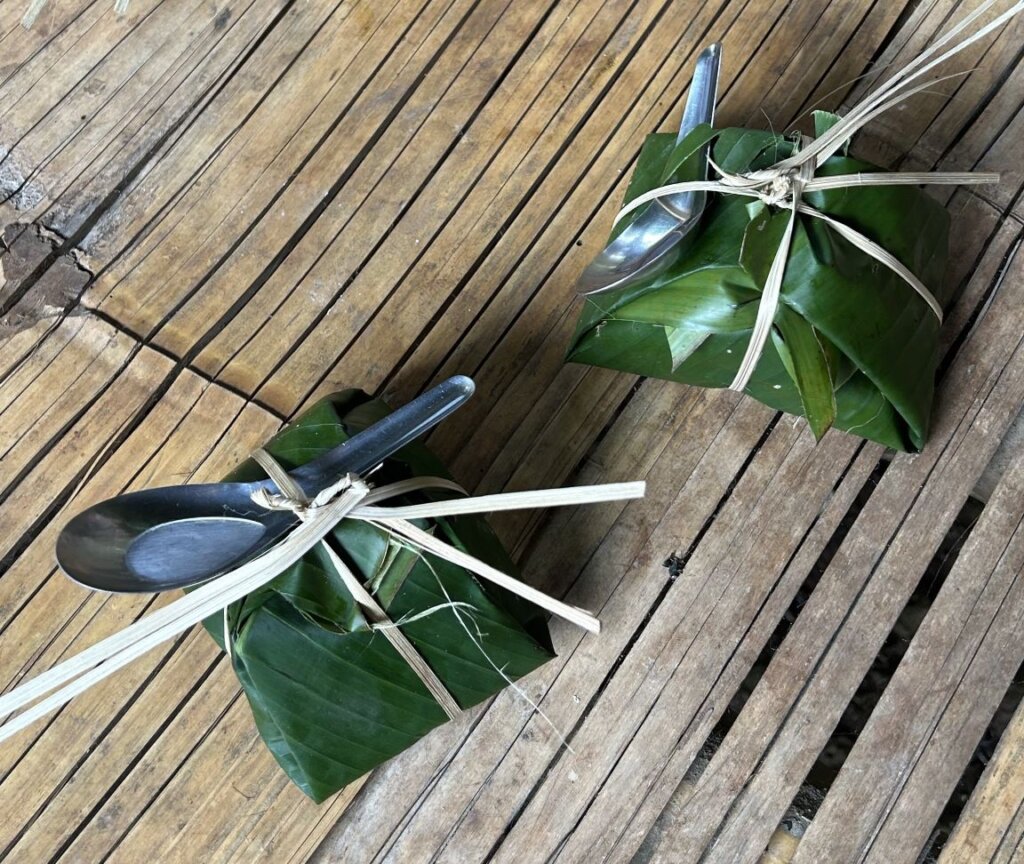
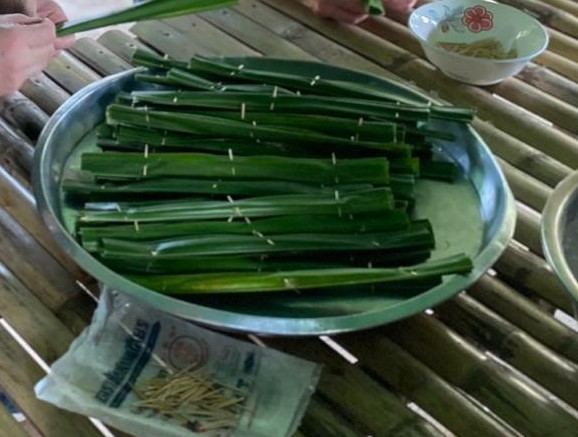
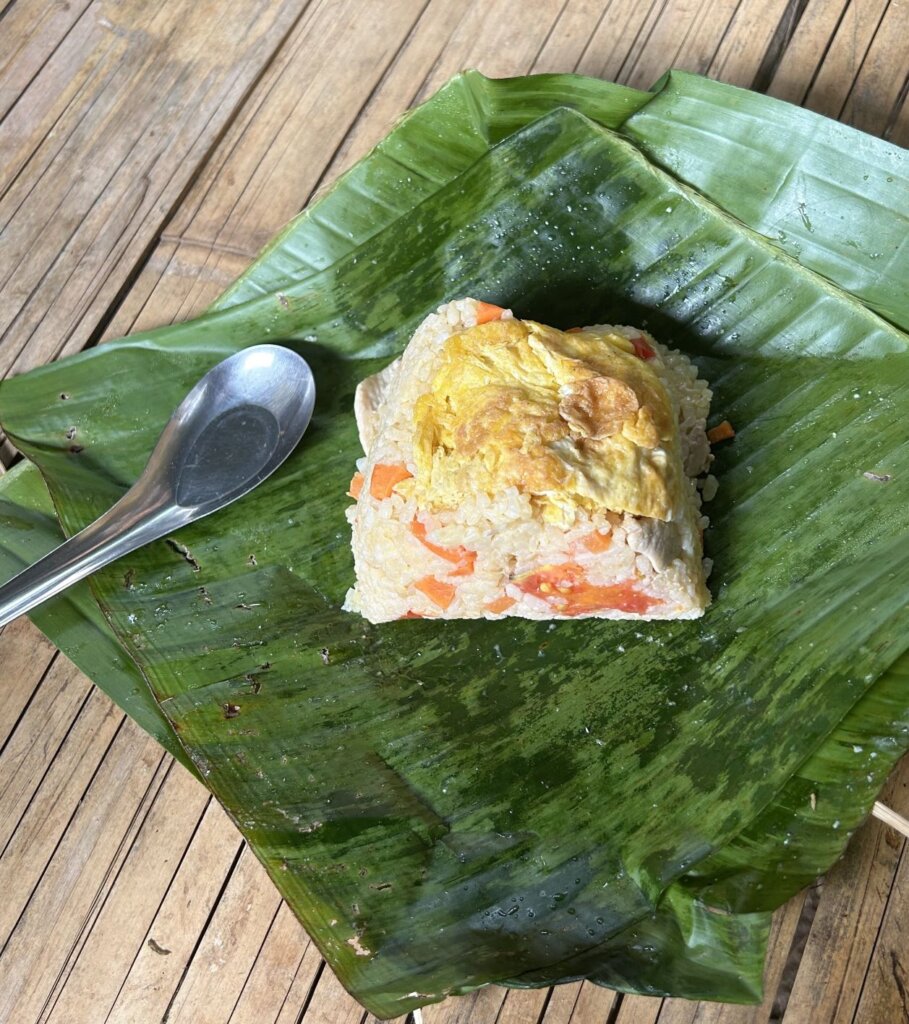
3 things for the next time:
- There are more caves to explore in Northern Thailand – we saw signs everywhere inviting us to visit
- There are lots of hiking opportunities in Northern Thailand – not something that I would undertake on my own, and absolutely with an experienced local guide.
- I would have liked to visit Chiang Rai. It’s at the very top of Thailand near Laos and Myanmar. In addition to the famous White Temple (Wat Rong Khun), there are many trekking opportunities in that area as well.
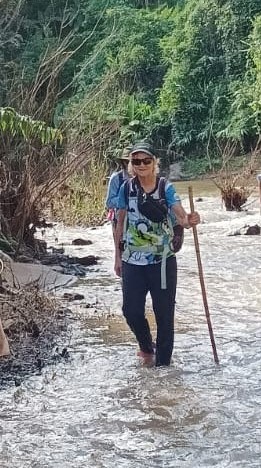
Recent Posts
Cycling Thailand
Cycling in Vietnam
Cycling in Holland
All Categories
Tags

Hiking Northern Thailand
As part of my tour of Northern Thailand in 2023, I was one of only 4 people who had signed up for a three-day hiking extension to remote villages. We would be accommodated in homestays.
Community Based Tourism (CBT)
Community Based Tourism refers to a form of sustainable tourism that emphasizes the involvement of local communities in the tourism industry. Its goal is to empower local residents, preserve their cultural heritage, and promote economic development. For the host country, community tourism is a way to diversify the tourism sector, promote sustainable development, and alleviate poverty in rural areas. Community tourism often focuses on showcasing the rich cultural heritage of local communities (e.g. such as traditional crafts, rituals and festivals), which benefit the traveler who is able to participate alongside local individuals, thus having a more enriching travel experience.
Cultures and diversity are celebrated by both the locals and the visitors – each can learn from the other. Of course, the success of CBT depends on the careful balancing of the activities, so that such interactions are authentic and meaningful and do not become only an Instagram post for the traveler and an overwhelming burden for the hosts.
Although this 3-day journey was focused on trekking, our accommodations would be with local families as part of a community tourism initiative.
Day 1 – Chiang Mai to Ban Mae Chok
We started with a 3-hour drive to our trail head, stopping at the Kiew Lom Viewpoint en route.

We would have to trek about 90 minutes before lunch. I started out trying to keep my feet dry – but soon gave up. It had been raining recently and we had to go through some water and mud. Oh well. The terrain was hilly – we went past lots of farms. The scenery was spectacular. Lunch was at a village farm, cooked by the woman who would be our homestay host. Rice, omelet, veggies, soup – an amazing feast that had been brought to us via motorbike.

We wandered about the farm and learned of the communal approach. This year, the farm’s crop would be garlic, and it was planting season. This was very much a manual operation.

The crops are rotated each year to both preserve the soil and to ensure all the farms in the community had equal opportunity.
We continued walking after lunch. It would be 2-3 more hours, with a lot of uphills, to Ban Mae Chok, a Karen village.

Our homestay did not have electricity, only solar power. The four of us would be on sleeping mats in one room. Interesting. I had not experienced this kind of group accommodation before. It was sort of like camping, except we had a roof and platforms. The toilet was not in the house – using it involved a slog through mud as it rained a lot that night.
Fortunately, we had a good group all of whom took everything in stride. I don’t think any of us had any preconceived notion of what this trek would be like – we were all there to learn
Day 2 – to Pa Khao Lam
Today would be our longest walking day – approximately 6 hours in total. It was a really nice hiking day – such incredible, peaceful scenery. We walked a lot in water. It was a new experience for me and a wonderful discovery – hiking in water! You stay cool all day long.
We stopped for lunch, again brought to us by our homestay host. We continued to the village where our accommodation was more modern (electricity and inside flush toilets). One of my guides told us about her personal experience with the evolution of toilets which was very amusing and actually highlighted the speed of improvements in rural Thailand. You learn so much from your local guides!

Before dinner we took a stroll through the village and stopped at the local school where we joined in some playground games with the kids. It has been a log time since I have done such fancy footwork! We were fortunate to be in Thailand for the Ok Phansa festival, which marks the end of the Buddhist Lent. In this community, every household prepared sweet offerings for the monks at a special ceremony in the morning. We helped our host family prepare some of their offerings and we joined the lineup the following morning with our own contributions that our guide had arranged.
Day 3 – to Ban Muang Kut
This would be our last hiking day, and only for about 3 hours in the morning. Today – we were walking even more in the water – I would estimate about 90% of the time. What fun! Some parts were waist high, but our guides assisted with our backpacks. Clearly, they have done this before! What a truly memorable day.

Our first destination of the day was the huge Tham Lod cave system, which was spectacular. We first took a bamboo raft into the cave, and then walked.

Our guide pointed out some of the more interesting shapes. It was really a fascinating place. Unfortunately we were not able to get into the “coffin cave” hidden within the main cave, and we were there in the morning so we missed the twilight return of the 300,000 bats and swifts which would have been really cool too see.
After lunch on the back of a pickup truck we headed to our final homestay in Ban Muang Kut. It was a tiny village on one of the most spectacular routes I have ever seen. I felt so blessed to be able to see such a beautiful place.

Even better, our guide had a good friend who lived there, and we were invited into his home for a visit. What an absolute treat, and the biggest advantage of having such a tiny group. His friend is well known as he started community tourism in that area. I think he had the best view in the whole village.
We had a couple of local visits – we created 7-eye protectors and visited the home of a local musician who builds, play, and fixes traditional Thai musical instruments. We were invited to try one of the wind instruments – none of us very successful. Apparently it is a dying skill in Thailand.


The next morning I got up early to watch the sunrise (magical!) and then we headed back to Chiang Mai.
Travelling with our small group and participating in a community-based tourism tour was enlightening. Comparing Thai lives to mine was inevitable. I felt fortunate to be able to travel, unlike many Thai people who face financial constraints or struggle to obtain necessary travel documents. This experience deepened my understanding of different cultures and enhanced my appreciation of universal truths: that family is a focal point for everyone, and that community and belonging are crucial for overall happiness. For the people in Northern Thailand, the community was where they lived. For those who like to travel, the community is people who like to do the same things you do.
Where else can my feet take me?
Please contact me if you are interested in discovering wonderful places with a new travel community!
3 highlights:
- Learning about the lifestyles and culture of the remote Thai populations.
- Discovering hiking in the water – what a marvelous way to stay cool!
- Learning about different uses for banana and palm leaves





3 things for the next time:
- There are more caves to explore in Northern Thailand – we saw signs everywhere inviting us to visit
- There are lots of hiking opportunities in Northern Thailand – not something that I would undertake on my own, and absolutely with an experienced local guide.
- I would have liked to visit Chiang Rai. It’s at the very top of Thailand near Laos and Myanmar. In addition to the famous White Temple (Wat Rong Khun), there are many trekking opportunities in that area as well.

